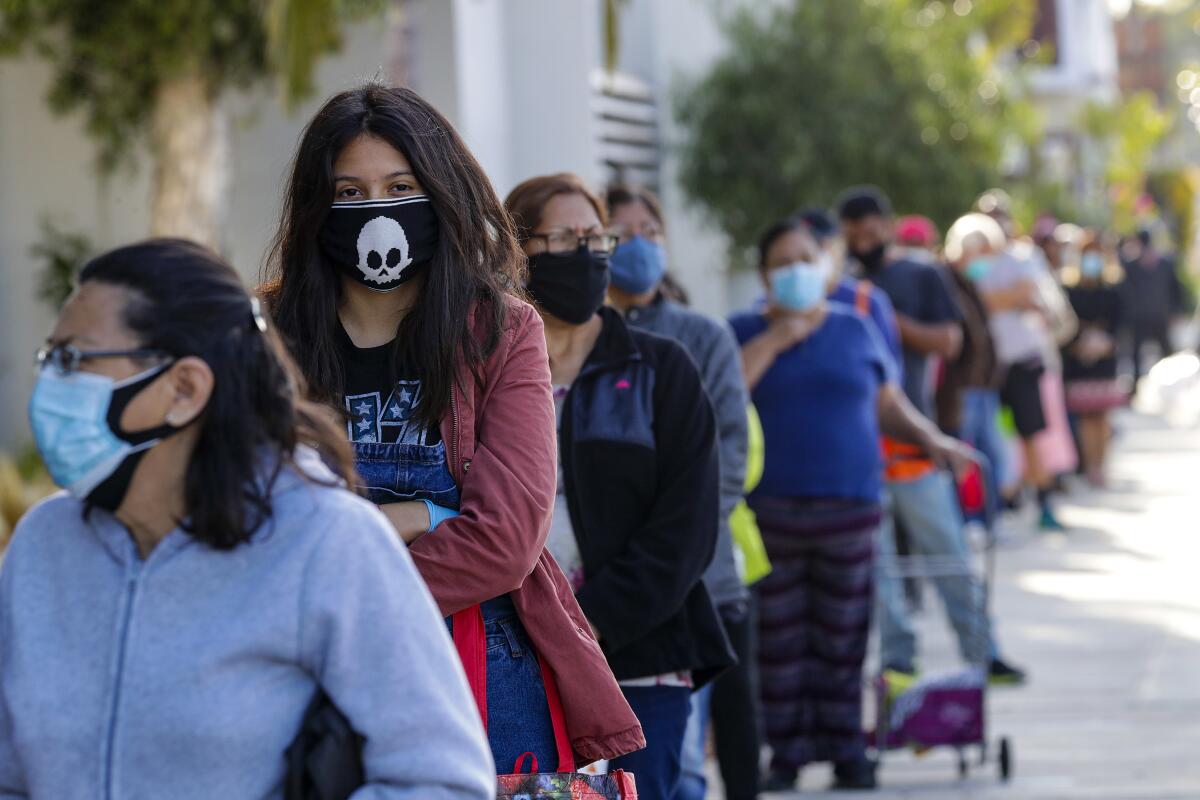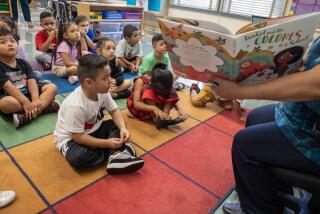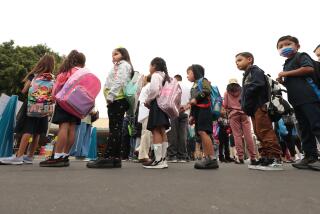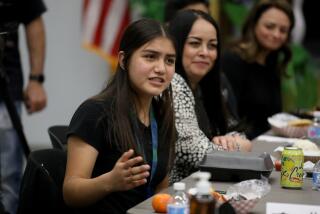Vaccine clinics at schools would solve multiple problems with a single jab

- Share via
A new report about how the COVID-19 pandemic affected the Los Angeles Unified School District doesn’t contain much that wasn’t already known: The past year was an academic calamity for hundreds of thousands of students, one that cannot be repaired solely by reopening campuses. The study, by the organization Great Public Schools Now, calls for more assessment of students’ skills, more individualized instructional programs and more teaching time.
All of which is on target, but with many parents having picked up the drumbeat of fear — and also unhappy that middle and high school courses won’t be anything like real school, even for students on campus — more than half of parents are planning not to return their kids to in-person classes right now. All the special assessments in the world won’t do much if teachers aren’t instructing the students in their classrooms, and that’s going to take vaccination not just for teachers but also for families. There’s a better way to go about that than the state and county have devised so far.
Great Public Schools Now is often looked on with suspicion by the teachers union because it grew out of a now-defunct plan to double the number of charter schools in the district. But there’s no getting around the facts in the report, most of which have been documented previously: Too many students aren’t showing up for remote class, enabled by the district’s lax attendance policy. Students are getting less real-time, face-to-face instruction from their remote teachers than their counterparts in other large school districts in California. Many of the youngest students are behind in learning to read. Many of the older ones are failing or getting a D, and that’s with extra grading leniency. And the problems are especially acute for Black and Latino students.
The district has plans to make up for the learning gaps. Having already bolstered its reading program for the youngest students, it will launch enhanced math lessons. Mental health counselors are being added, class sizes reduced. Summer school will be available for all students, and the school board will be asked to expand the school year. But summer school will be helpful only for students who enroll in it; the district cannot require it. And the extended lessons will run for only two weeks, not enough to make a tremendous difference. If neither of those is conducted with in-person classes, they will be of limited help.
As brutal as the last year has been, the next year will require even more of teachers, students and parents. Whatever extra programs and services L.A. Unified offers, the most important part is getting students back in the classroom, taught in person by their teachers, as close to full time as can be managed. (When middle and high school students return this month, they will sit in regular classrooms but take their classes remotely from teachers sitting in other classrooms, which is why so many parents aren’t impressed. That needs to be fixed.) Teachers need training to help students who have spent a year with little socialization, surrounded by illness and fear.
But to get students back into the classroom, L.A. Unified has to ease their concerns. To do so, the district should provide vaccines for the low-income families who make up so much of its population.
L.A. Unified has offered several times to hold vaccination clinics on its campuses for the wider community. This would be ideal; not everyone can easily get to the larger, more centralized vaccination locations. It would reduce trepidation not solely by protecting people through immunization, but also by encouraging them to visit campuses, feel safe on them and learn about the district’s coronavirus testing program, enhanced academic and mental health programs, and the many planned safety procedures. Maybe they can be persuaded to sign their children up for summer school at the same time.
The district will open a couple of those clinics next week, through a special arrangement with a hospital. What it needs, though, is a significant allocation of vaccines from the state’s weekly shipments. It would be an effective way to get the vaccines to low-income populations and make schools a community resource to which parents will entrust their children.
More to Read
A cure for the common opinion
Get thought-provoking perspectives with our weekly newsletter.
You may occasionally receive promotional content from the Los Angeles Times.









